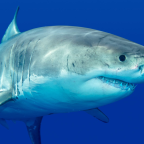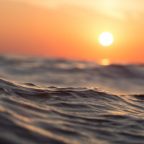
Japan’s Antarctic whaling fleet sailed off this morning to its biggest killing in 20 years, leaving fisheries officials unsure if they will be able to handle the results of its efforts.
When the fleet returns to the port of Shimonoseki in mid-April, its catch will increase the supply of whale meat by about 70 per cent. An official conceded yesterday there was uncertainty as to whether the market could handle that without a collapse in the price.
Under JARPA II, the new Antarctic program Japan unilaterally adopted earlier this year, the six-vessel fleet will harvest up to 945 whales in the next six months, more than double the previous seasonal catch limit.
Australian Environment Minister Ian Campbell said yesterday Australia was “using all available diplomatic options” to persuade Japan to respect the International Whaling Commission’s vote in June against implementing JARPA II and that he remained hopeful, even at this late stage.
“We understand that coastal whaling is part of the Japanese culture but sending highly technically advanced ships to another hemisphere, another ocean, there’s no culture in that,” he said.
But Japan’s Institute for Cetacean Research insists the new quota will be filled for a maximum 935 minke whales, up from 440 last year, plus 10 fin whales, which are still listed under the International Convention on International Trade on Endangered Species.
Next season, the southern fleet will also start hunting the humpbacks so beloved of Australian whale-watchers. When JARPA II is in full swing, the seasonal quota will include 50 humpbacks and 50 fin whales.
Besides angering whale-conservation nations, the expanded catch presents Japanese fishery officials with a potential headache: can they sell almost 3000 tonnes of extra whale flesh next year without ruining the market?
The ICR insists the meat is a “by-product” of its controversial scientific whaling and its sale funds about 90per cent of the program’s Y520million ($6million) annual cost.
Already, about 45per cent of the annual catch is distributed as government-subsidised meals through schools and local authorities to foster what the authorities call Japan’s traditional “whale culture”.
The lowest quality meat, about 55per cent of the total, is processed for canned food and only the best 10per cent goes to fish markets and supermarkets.
A source, who asked not to be named, told The Australian yesterday the fisheries industry was expecting the Government to expand its subsidy of whale meals next year but that market prices would still have to fall significantly.
With the North Atlantic fleet recently returned to port and about 1000 tonnes in stock, retail prices are firm. Standard red meat costs about Y580 for 100g but the best quality onomi, the prized fatty tail meat, is priced at Y10,000 for 100g, when anyone can find it.
Whaling enthusiasts claim the Japanese would eat more whale if they could; opponents cite surveys such as the Asahi Shimbun’s in 2002 that found only 4per cent regularly ate it, 53per cent had not touched it since school and 33per cent had never tasted it.
“In reality, few Japanese view whale meat as a food source and even fewer actually eat it,” Greenpeace Japan’s Mizuki Takana said.
“Whaling is simply not important to the Japanese public.”
Source: The Australian
Top Image: Kyodo/MaxPPP












Social Profiles